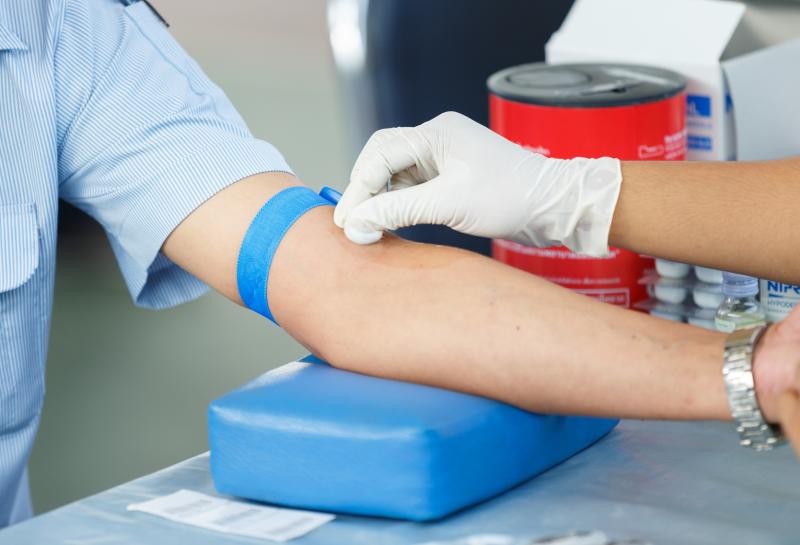 Australian scientists have developed a simpler way to help detect Parkinson's disease: through a blood test.
Australian scientists have developed a simpler way to help detect Parkinson's disease: through a blood test.Incorporating basic tumour characteristics, such as hormone receptor status and tumour origin, improves the power of the cell-loss metric to predict response to treatment, according to a new study presented at the recently concluded 2019 Asia Congress of the European Society for Medical Oncology (ESMO Asia 2019).
“Early prediction of tumour response to therapy is essential for individualized treatment and sparing nonresponders needless harm,” said researchers, noting that a correlation between such response and tumour cell loss has recently been found in breast cancer patients undergoing neoadjuvant chemotherapy. The goal of the present study was to see if basic tumour characteristics could improve the predictive ability of this cell-loss metric.
Of the 58 localized breast cancer patients (median age, 49 years) who underwent neoadjuvant treatment, the median concentration of serum thymidine kinase 1 (sTK1) at baseline was 0.28 ng/mL. This had doubled before the second to fourth treatment cycles and further increased to thrice its original level 48 hours after treatment. [ESMO Asia 2019, abstract 29P]
The volume of the tumour decreased exponentially over the course of treatment, dropping below 50 cm3 by the fourth cycle. More than a quarter (26 percent; n=15) achieved local tumour control.
The biomarker sTK1 is released when tumour proliferation is interrupted and was used as the primary measure for the cell-loss metric, along with tumour volume.
The median cell-loss metric value at baseline was calculated to be 0.0032 ngxml–1/cm3. This grew fivefold by the second treatment cycle, and further to seven times its baseline figure 48 hours after. Participants who had achieved local control had significantly greater cell-loss metric values than those who still had remaining tumours.
In addition to this, forward selection found that the oestrogen receptor (ER) status and histological type of the tumour were also significantly predictive of local control. Other factors―such as age, menopausal status, positivity of axillary lymph nodes, tumour subtypes, and progesterone (PR) and HER2 receptor status―were not.
A logistic regression algorithm found that adding ER status to the cell-loss metric increased the resulting area under the curve (AUC) from 0.703 to 0.789. The effect of histological type was stronger, improving the AUC to 0.843.
Moreover, incorporating PR status and the ratio between Ki67 and tumour volume at baseline led to a spike in detection specificity and sensitivity to 0.93 and 0.975, respectively. The resulting AUC of this model was 0.916.
“This cell-loss metric appears useful for early prediction of pathological response as established at surgery,” the researchers said. “Here, we could demonstrate that the predictive power of the metric was significantly improved by adding tumour markers … obtained by routine histopathology at diagnosis.”
“The usefulness of data on macromolecules released from tumour tissue into blood circulation can be improved by combining them with other tumour properties,” they added. “Early prediction of tumour response makes this cell-loss metric potentially useful in personalized oncology and in the evaluation of new therapeutic modalities.”